The (fatal) mistake you should avoid when translating marketing brochures
mar 10 2023
It’s just another normal day at our translation agency in São Paulo when the telephone rings.
— Hello. I have a set of marketing brochures in English that I need to translate into Portuguese and Spanish. Do you do this kind of work?
Translate marketing brochures, I think. Great! I love this kind of work. Specialized work — just the sort of service that fits our company´s profile.
— We do, yes. Have you got the material for us to prepare a quote?
— Of course. I’ll send you the files by e-mail.
After a short while, a message arrives with three PDF files attached. I open the files: two brochures for specific products and a catalog of the company’s product line;
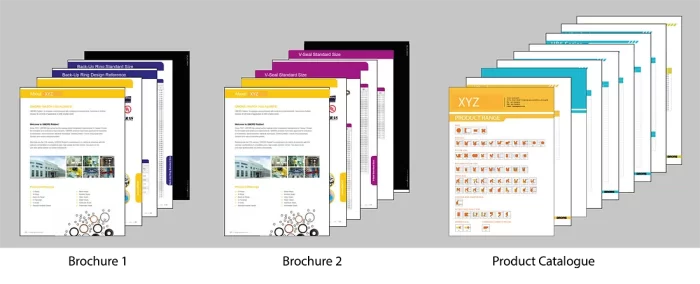
Well, they only sent us PDF files. When I examined them, I saw that they had been created with Adobe Indesign, the most widely used tool at the moment for this type of material. I called the client:
— Do you have the files in the Indesign format?
— No. I only have those PDFs.
I told the client:
— PDF isn’t a suitable format for translation work.
Reply:
— I´ve heard Adobe Acrobat can export the PDF to DOCX with the formatting all perfect. Then you can translate the DOCX in Word and the job is done.
So I explained to him:
— That’s the wrong process. The right way is to work with the Indesign file. The process that you want to use will be slow, expensive and prone to mistakes.
…
Let me make an aside to explain this better.
PDF is a wonderful format for viewing documents on the screen. You see the document exactly as you would see the printed material.
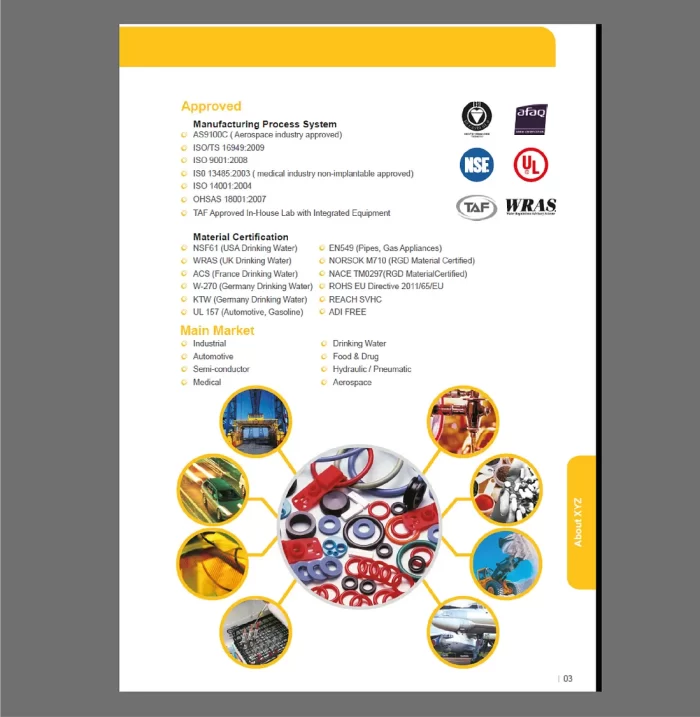
However, PDF is not a suitable format for editing content. A translator can’t work in a PDF file (see our article on PDF files).
To get around this problem, Adobe included a feature in Acrobat that allows you to save the file in DOCX format. At first glance, the result is fantastic. The file retains its formatting exactly and can be edited in Word.
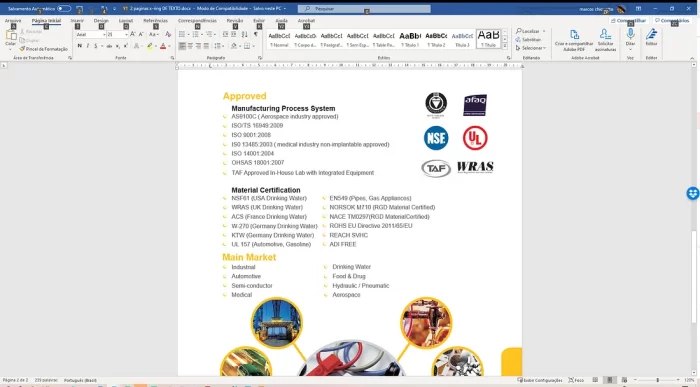
This really seems to solve the problem. However, when you try to edit the content, you realize that the file was formatted with “brute force”, with the text elements positioned without the correct formatting resources. The result: any formatting change spoils the document.
For example, the figure below shows two lines where the text was translated and the resulting text was larger than the original. These parts seemed to be correctly formatted in the exported English text (above), but when the text grew, each line became joined to the next one in a single string. Although they had seemed to be well formatted, they were not. The initial appearance was nice, but there was no well-formatted underlying structure.
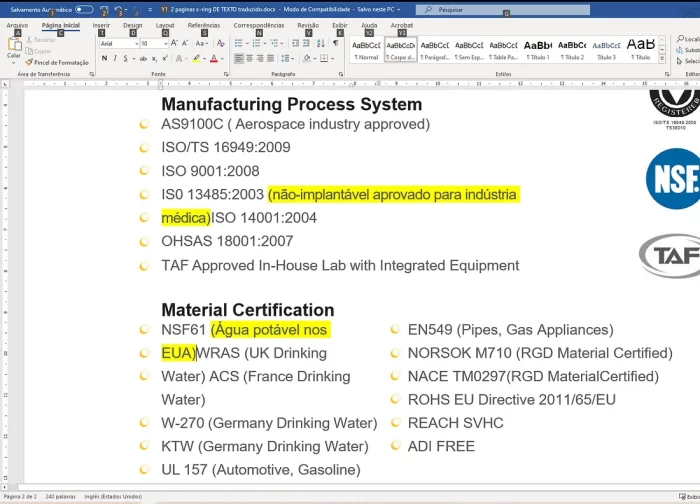
It will be very difficult to correct this. If a line feed is introduced at the end of one of these lines, the formatting of the entire page will be thrown off from that point on. Then, if you try to correct it, the page may extend onto the next page, etc. From then on, the work will be a nightmare. This file is unlikely to ever become a correctly formatted document.
The result is that a file translated this way will hardly ever be useful as a final document. It contains the translated text, but with the formatting irreversibly damaged. The solution then is to hand the work to a second professional to create a file in Indesign with the correct formatting. Or, if the original Indesign file is available, paste the translated parts into it one by one.
The following figure shows this second option in the Indesign screen. The incorrectly formatted lines in the previous figure would be pasted onto the sections circled in red. Similarly, all the translated text would have to be pasted line by line into the Indesign file.
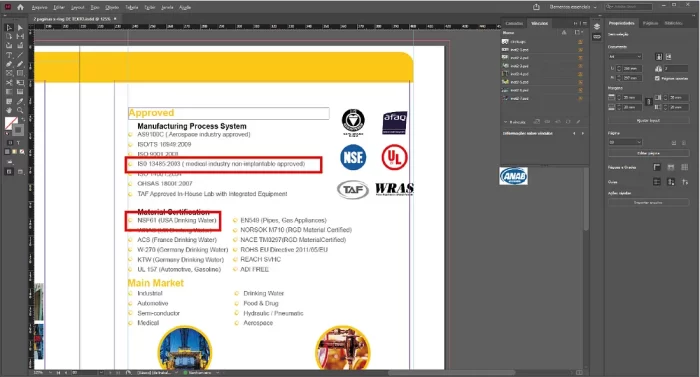
After manually pasting hundreds of lines from a DOCX file to an Indesign file, the result would have to be thoroughly checked to correct the inevitable mistakes involved in this process.
The end result: a translation done in a few days in DOCX will require a long, expensive, error-prone process to complete, which will add weeks to the turnaround time.
End of the aside.
…
Getting back to my conversation with the client. I explained to him:
— Try to get the Indesign files. The agency that created these documents has the files and they are yours. Speak to them.
Even though he was not happy to have this unexpected extra work, the client went after the requested material. A few days later I got another call:
— I got the Indesign files. They are too big to attach to an e-mail. I’ve sent everything to you by Wetransfer.
…
I need to make another aside here.
Indesign organizes the document in a folder structure with a main .indd file that contains the formatted text, a folder with all the graphic files and a folder with the fonts. When all of this is copied to any machine with Indesign, everything is perfectly organized. All you have to do is to translate the indd file and the graphic files that have translatable text.
But working directly in the .indd file is not efficient for a translator. It is better to use software tools like SDL Studio or MemoQ that extract the text to a translation environment where the translator can work more comfortably.

These tools provide the translator with various resources:
- Access to a translation memory system (see our article on translation memory) to make use of repeated text within the project as well as translations done previously for the same client;
- Direct access to machine translation engines, which boosts the translator’s productivity as the work starts from a pre-translation (see our article on machine translation);
- Quality assurance tools to detect spelling and grammar mistakes, translation inconsistencies, mistakenly changed numbers, etc.
Once the translation is finished, the file is saved back into the Indesign format and everything is in its place. The only remaining task is to do a quick review of the pages in Indesign to fix any formatting issues.
That’s it. Job done.

A perfect job done quickly. A brochure that would take weeks to translate using the wrong process is ready in a few days.
End of the aside.
…
So I received the complete set of files in the Indesign format via Wetransfer. I quickly exported the text to the translation environment and sent a package to excellent Portuguese and Spanish translators who have worked with marketing material for years and know exactly how to translate this kind of material.
In three days, everything was already translated. One more day for reviewing the formatting and a final proofreading. In a week, the client received flawless Indesign packages in Portuguese and Spanish, with the respective PDFs.
The two brochures and the catalog had a large amount of repeated text as they dealt with similar products. The translation memory took advantage of that repetition, resulting in an excellent price for the entire job.
Lastly, a call from the client:
— Great work. Thank you!
If I had not insisted on the client doing something he didn’t deem necessary, the work would have started quickly with the PDFs saved in DOCX but would have been more expensive, taken longer and been of poorer quality. With the right method, the start of the work was delayed a few days until the right files were available, but everything was ready and perfect in a week.
It is part of our job to show the client the best way of doing what he needs to do as he may not always know the different paths that can be taken to get the desired result.
Nothing better than experience and technology!

I am an engineer, physics teacher, translator, and writer. I am also director of LatinLanguages, a translation agency that provides multilingual companies and final clients with translation into Portuguese and Spanish. If you work with these languages, we are your best option—delivering world-class service at Brazilian prices.
Marcos Chiquetto




